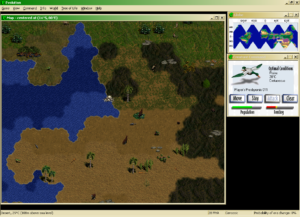Freedom Force: Prestige and Perfection
I describe myself as a completist. This is a matter of habit, and the habit was formed when I was a child and didn’t have the disposable income to buy a new game whenever I wanted one. Scouring a game for every last crumb was a way of extending the experience. But while it extends, it also dilutes. I can’t deny that completist habits can interfere with the enjoyment of a game, dragging it out past the point where it has anything to teach you. But then, sometimes failing to go for 100% means you see only half the content. It all depends on the game — some are calibrated for completism, some are not.
If a game designer wants to encourage completism, it’s easy to do: just tell the players what they have and have not accomplished. Freedom Force does this at the end of every level. Every primary and secondary objective is listed — if you’ve completed the level, you have by definition executed all the primary objectives, but secondary objectives can wind up with a big X of incompletion next to them. Also, every type of enemy you encountered is listed, with the number defeated out of the number available to be defeated, like “Thug with bat: 11/12”. Any completist looking at that will want to hunt down the twelfth thug with bat. Which is a problem, because it’s not really worth it, in terms of entertainment or in terms of gameplay mechanics. The real point of this summary screen is not to encourage completism, but to tell you where your Prestige Points are coming from. Prestige is kind of like XP for the whole team, but its sole effect on gameplay is unlocking optional heroes, and the quantities of prestige needed for this are large enough that picking off a few more thugs won’t make a difference.
It seems like the designers of the game were aware of the problem, because there’s a pair of levels that are positively designed to break the completist mindset.
First, there’s “Prehistoric Panic”, a level in which a dinosaur-emitting portal opens up in the middle of the city. (It’s not yet clear why this happened. Presumably Energy X is involved somehow, because that’s the explanation for everything else in the game, but if I meet a scientist named Kirk I’m gong to hit him very hard.) There are a number of set encounters here, but there are also additional dinosaurs that simply come out of the portal over time. Allegedly in the original version you could exploit this to get as much Prestige as you wanted by just standing by the portal and trouncing the dinosaurs as they came through, although a later patch capped the prestige bonus at 20 of each type of creature. Either way, this is the first occasion where the number of enemies is not fixed. You’re required to defeat every dinosaur that appears, but regardless of how many that is, the Prestige report treats it like completion: “Raptors: 6/6” if that’s how many there were. Knowing that the maximum can vary makes it seem less important somehow.
This is immediately followed by a level involving giant ants destroying the city. Once again, the number is not fixed, and you can stand there and farm prestige if you really want to, but the goal is to destroy the holes they’re emerging from. In fact, the ants simply vanish when you destroy their holes, so you can complete the level without harming any ants at all. The key thing about this level is that it is impossible to completely avoid prestige penalties. That’s another thing reported between levels: collateral damage in the form of civilians harmed and buildings destroyed. Usually, it’s not hard to keep that section of the report clear, as small items like cars and lampposts aren’t counted. But here, even if you did everything perfectly, there will be buildings destroyed when the ants create holes directly under them.
The interesting thing is that this time around I knew what was coming, but still felt the need to try for perfection in the levels before these two. I suppose it’s due to the content. Up to this point, the level goals were generally to prevent chaos and destruction. For example, when a villain called Nuclear Winter (basically Mr. Freeze as a soviet agent) tries to detonate a stolen atom bomb, you have no choice but to prevent it from going off. But in these levels, preventing chaos is not an option. Chaos has already begun. You’re there to stop what has already started, and anything that delays you in this errand is a bad thing, even if it does net you a little more Prestige.
 Comments(0)
Comments(0)